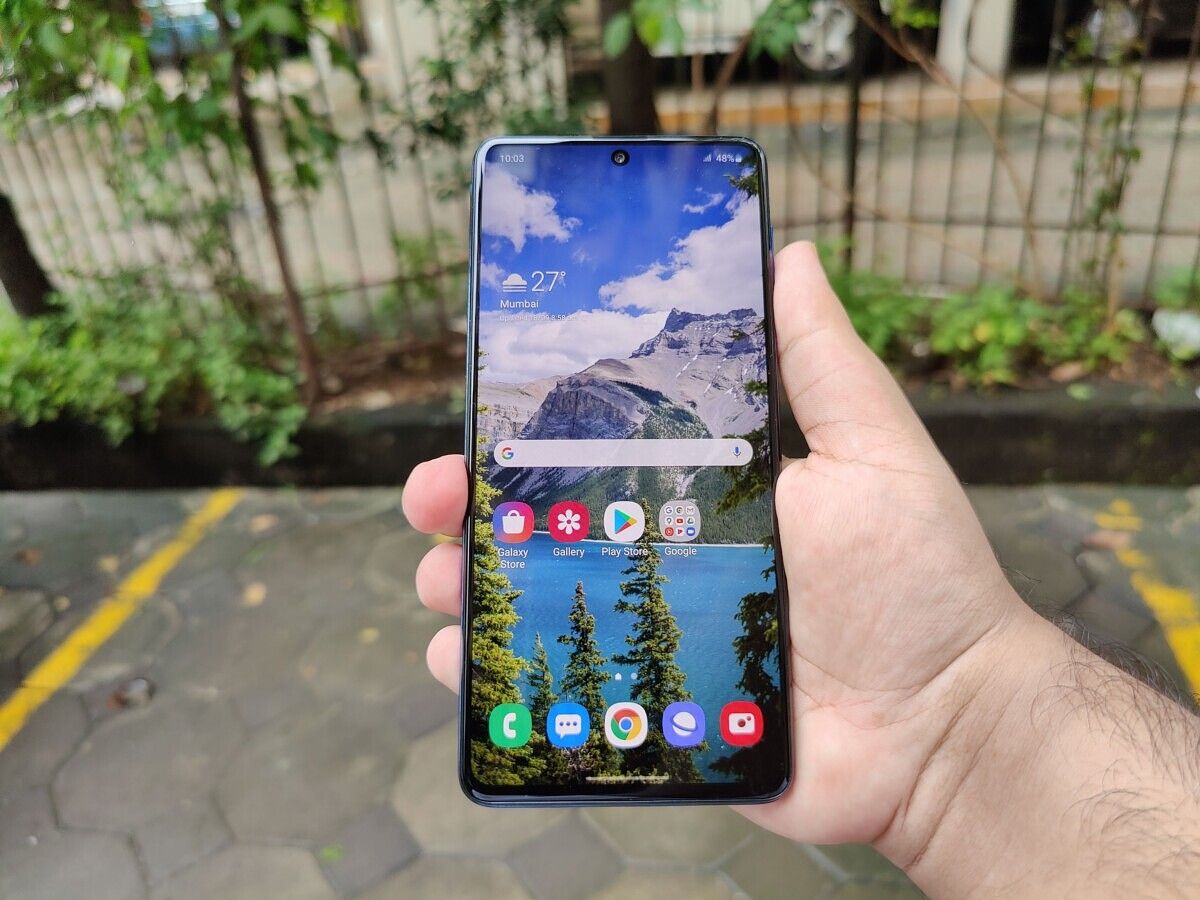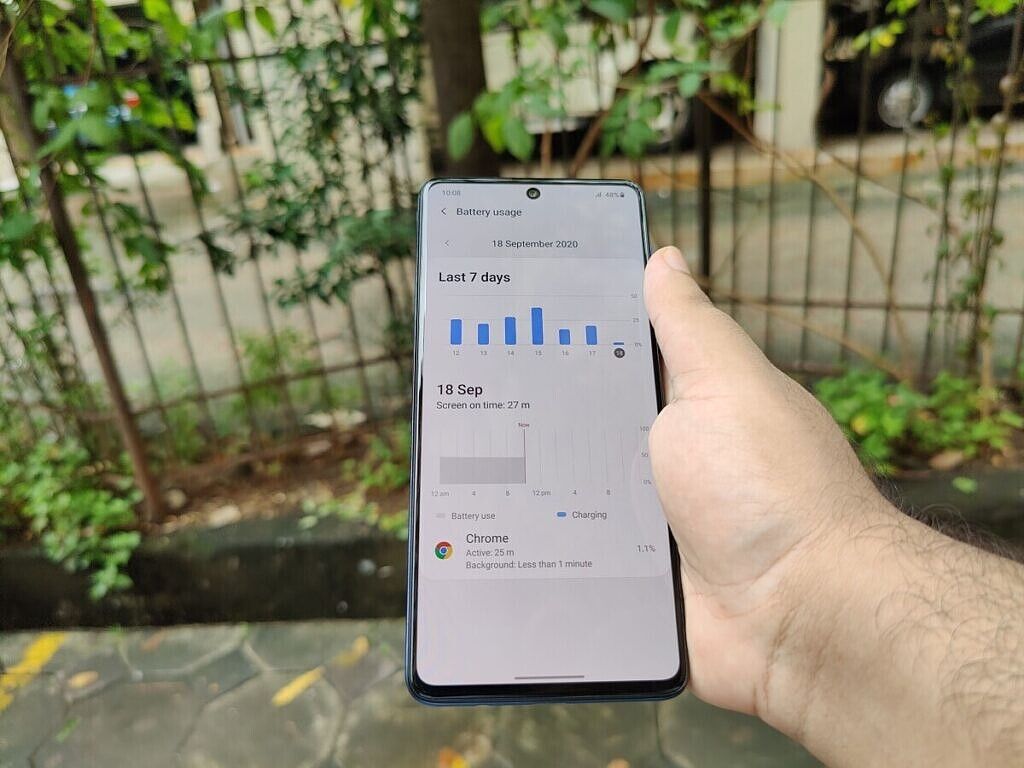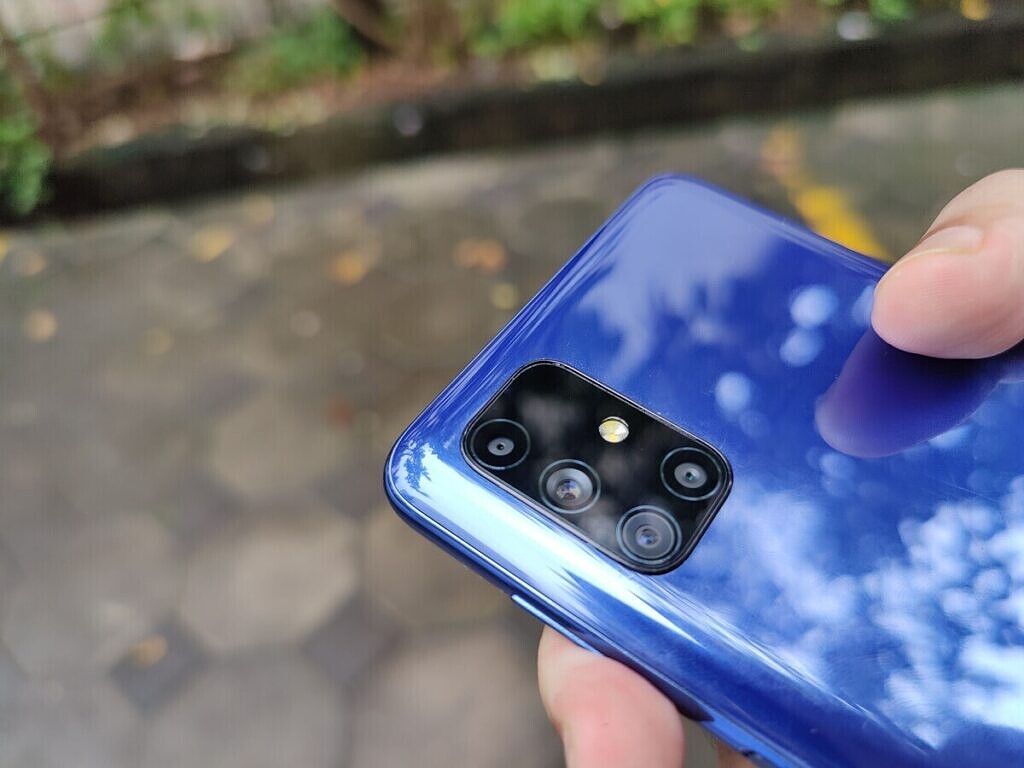Not too long ago, Samsung was ceding a lot of ground to China-based smartphone vendors such as Xiaomi and Realme in the budget, lower mid-range, and upper mid-range segments of the smartphone market. In 2017 and 2018, the company lost its position as the top smartphone vendor in India to Xiaomi, and it hasn't regained it since. The budget Galaxy J series and the mid-range Galaxy A series weren't competitive enough to stand out in a crowded world of high-value propositions. Therefore, Samsung reset its mid-range phone strategy in 2019 with the launch of the new online-only Galaxy M series and a substantially upgraded Galaxy A series. Phones like the Galaxy M30 and its successors were meaningful steps forward, even though they still couldn't compete head-to-head with more aggressively priced phones. Even in 2020, the Galaxy M series has a value deficit when compared with phones from Xiaomi and Realme, but that hasn't stopped Samsung from doubling down on the series' USP: huge battery capacities. The Galaxy M20 and the Galaxy M30 had 5,000mAh batteries, while the Galaxy M30s brought a 6,000mAh battery to the mid-range segment, carried over by the Galaxy M31 and the Galaxy M31s. Now, the new Samsung Galaxy M51 - intended as the flagship of the M series - brings a mammoth 7,000mAh battery, a first for a mainstream "branded" phone in the upper mid-range segment.
Related Reading: Samsung Galaxy M31s Review: Rehashing a successful formula
The Galaxy M51 makes the right choices on paper with a big 6.7-inch AMOLED display, Qualcomm's reasonably capable Snapdragon 730G system-on-chip, a 64MP Sony IMX682 primary camera sensor, and the 7,000mAh battery with 25W fast charging support. However, it has to deal with a crowded field of competitors, including the OnePlus Nord, Realme X3, Realme X2 Pro, and the Redmi K20 Pro on the one hand, while dealing with pressure from lower-priced phones such as the POCO X2, POCO X3, and the Realme 7 Pro. Can it stand out at its starting price tag of ₹24,999 (~$341), or does it face the prospect of being an also-ran in this competitive segment? Let's see how it performs in our review.
|
Specification |
Samsung Galaxy M51 |
|---|---|
|
Dimensions & Weight |
|
|
Display |
|
|
SoC |
Qualcomm Snapdragon 730G
Adreno 618 GPU |
|
RAM & Storage |
|
|
Battery & Charging |
|
|
Fingerprint sensor |
Side-mounted fingerprint sensor |
|
Rear Camera |
|
|
Front Camera |
32MP, Sony IMX616 sensor |
|
Android Version |
Android 10 with One UI 2.1 |
About this review: Samsung India sent us the 8GB RAM + 128GB storage variant of the Samsung Galaxy M51 (SM-M515F) for review, and I have used the phone for ten days. Samsung India had no inputs in this article.
Samsung Galaxy M51: Design & Display
Design
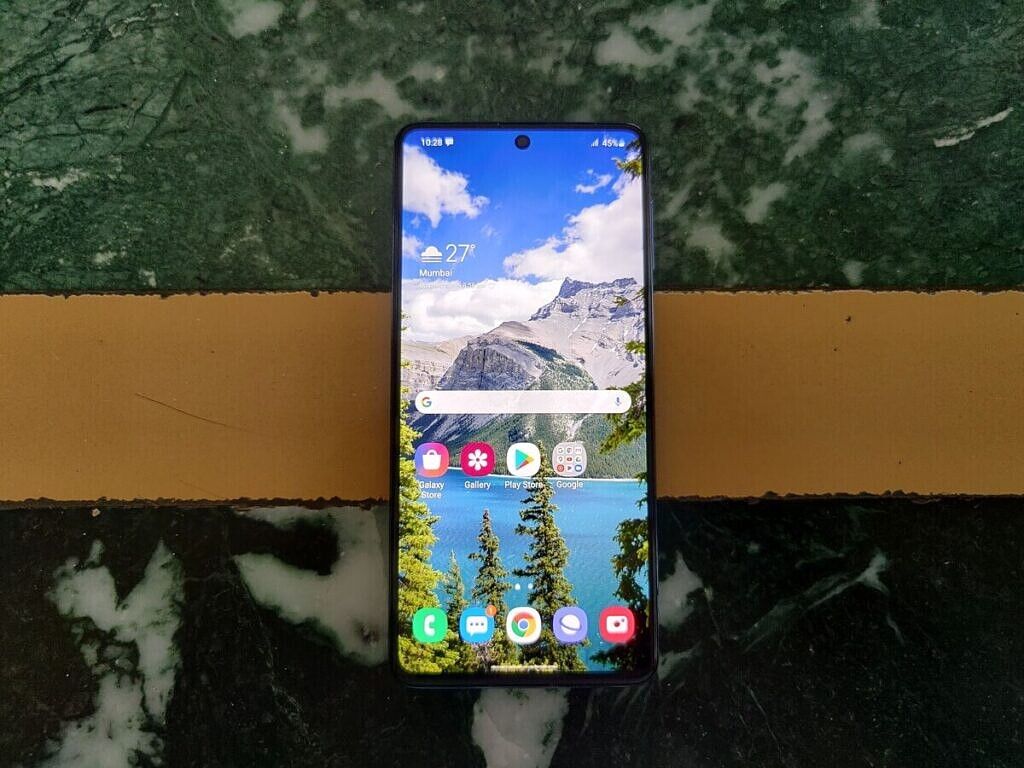
The design of the Samsung Galaxy M51 is a feat of engineering.
For a long time, phones with a battery capacity of 5,000mAh or greater had a reputation of being thick and unwieldy. Device makers continue to present phone thickness as the reason for not placing bigger batteries in their phones. The argument was that consumers preferred thinner phones with reasonable battery life over thicker phones with excellent battery life. Thickness does have a real effect on ergonomics and phone usability, so by and large, the industry settled on the sweet spot of 4,000mAh-4,500mAh batteries in phones with display sizes going all the way up to 6.7-inches.
Phones like the ASUS ROG Phone series only proved the point that if you wanted a big battery capacity (6,000mAh), you would have to pay for it with device thickness. However, Samsung worked on this issue with the Galaxy M series. The Galaxy M30 series were generally held to be surprisingly usable in hand despite having large battery capacities, a feat achieved by using plastic instead of glass and aluminum in device construction. With the Galaxy M51, the company has reached a new level, as it was able to feature an even larger battery cell in a phone size that is still recognizable as a phone by 2020 smartphone standards.
Despite having an unparalleled 7,000mAh battery, the Galaxy M51's in-hand usability and ergonomics are excellent. As expected, the phone is a lot thicker (9.5 mm vs. 7.8 mm) than flagship 6.7-inch Samsung phones such as the Samsung Galaxy S20+ (review). The weight of the phone is surprisingly manageable at 213 grams, though. The weight distribution is good, and it's just three grams heavier than the OPPO Reno 10x Zoom (review), a phone with a 4,000mAh battery and a mechanical pop-up front camera. By using a tried-and-tested hole-punch front camera and using Glasstic (glossy plastic) as the build material of choice, Samsung has been able to keep the traditional problems of thickness and weight in check. It's something that I couldn't have thought possible for the company to do two years ago.
The Galaxy M51's in-hand usability and ergonomics are great.
There is a downside to the design to be sure. The phone's glossy all-plastic construction doesn't feel as premium as phones with glass backs and aluminum frames, but I consider that to be an acceptable trade-off for all the extra hours of unplugged time we get in terms of battery life.
Apart from the admirably restrained weight and thickness, the Galaxy M51 is a typical Samsung phone in terms of design, with a curved back, flat sides, and rounded corners. It has a centered hole-punch front camera on the front. The front bezels and the hole-punch camera itself are bigger than flagships like the Galaxy S20+, but they are still acceptable. On the back, the rectangular camera enclosure contains the four cameras (64MP primary + 12MP ultra-wide-angle + 5MP macro + 5MP depth sensor). It has become a standard design feature of 2020 Samsung phones, and thankfully, the camera bump is slight despite the 1/1.7" primary sensor. There is a 3.5mm headphone jack, which is a welcome sight on an upper mid-range phone. The volume buttons and the power button are placed on the right side of the phone, and the fingerprint sensor is integrated with the power button. It's all standard, and there is not much to criticize here. Even the color options are a bit boring as you can only get the phone in black or blue color. I got the blue variant, and it looks fine, but aesthetically, there are better options on the market out there.
The Galaxy M51 doesn't have an IP rating for water resistance, which is a bit of a shame. It also lacks wireless charging, as expected. On the other hand, it does feature a dedicated microSD card slot, which means users can have two SIMs and a microSD card slot at the same time.
In the box, it's good to see Samsung bundling a 25W USB Type-C Power Delivery 3.0 fast charger in the box, which is the same one it bundles with the Galaxy M31s and even the Galaxy Note 20 Ultra. Strangely, however, there is no case in the box. Samsung also doesn't apply a factory-installed screen protector on the display.
Overall, the Galaxy M51's design and build quality are pretty good. An aluminum frame would have resulted in better durability and a more premium in-hand feel, but it would have driven the weight up. It would have been better if Samsung had gone with a glass back or even a matte plastic finish, as the glossy plastic does collect a lot of fingerprints. For the price point, however, the compromises are acceptable, especially when considering the battery size.
Display
The Galaxy M51's 6.7-inch Full HD+ (2400 x 1080) 20:9 Super AMOLED Plus display is protected by Gorilla Glass 3, which is four generations old now. It's disappointing to see Samsung not going with Gorilla Glass 6, let alone the latest Gorilla Glass Victus. This is nothing but an example of cheap cost-cutting, and it's not something I can get behind. The display has a 60Hz refresh rate, which means it misses out on the high refresh rate trend. Phones with 90Hz displays such as the Realme 6 and the Realme 7 are available for as low as ₹13,999, while the POCO X2 (review) with its 120Hz display costs ₹18,499. The Galaxy M51's 60Hz panel is a long way behind the curve here, reflecting poorly on Samsung. Not having a high refresh rate display means real-world smoothness is adversely affected, which means that even with a Snapdragon 730G SoC, the Galaxy M51 won't feel as smooth as the aforementioned Realme and Xiaomi phones.
The quality of the display itself, on the other hand, is excellent. It has a High Brightness Mode, which means sunlight legibility is excellent. The "Super AMOLED Plus" nomenclature doesn't mean it has an RGB matrix, though, as it's still Diamond PenTile. The terminology now refers to having a thinner panel. The viewing angles are excellent (with limited perceptible color-shifting across angle changes), the contrast is typical AMOLED-great, and the display has a Natural color mode that is calibrated with respect to the sRGB and DCI-P3 color gamuts thanks to having automatic color management.
Performance
The Samsung Galaxy M51 is powered by the Qualcomm Snapdragon 730G SoC. It's the fourth Galaxy M-series phone to feature a Snapdragon SoC, following the Galaxy M40, Galaxy M01, and Galaxy M11. Previously, Samsung used high-end Snapdragon chips only in its upper mid-range Galaxy A series phones (such as the Galaxy A71) and regional variants of its flagship Galaxy S and Galaxy Note series. Mid-range Exynos SoCs such as the Exynos 9611 have failed to even match the Qualcomm Snapdragon 675 or the Snapdragon 710 in terms of CPU performance, as Samsung's chips have been lagging behind Qualcomm for a while now. Therefore, the Snapdragon 730G here is a significant step up from the Exynos 9611 SoC, used in the Galaxy M30, Galaxy M30s, Galaxy M31, and the Galaxy M31s (yes, Samsung has been re-using it for multiple phones). It features two-generation newer ARM Cortex-A76 cores (although there are only two of them), and it has a faster GPU as well.
The problem here is that you can get the Snapdragon 730G and its newer variant, the Snapdragon 720G, in phones that cost a lot less than the Galaxy M51. The Redmi Note 9 Pro/Redmi Note 9S (review) costs just ₹13,999, for example. The POCO X2 (review) and the Realme 7 Pro are available for lower prices than the Galaxy M51. At the Galaxy M51's price point, you can get phones like the OnePlus Nord (review), which features the more powerful Snapdragon 765G SoC. You can also get last year's Redmi K20 Pro (review), which features a year-old flagship Snapdragon 855 SoC. The Realme X3 also costs the same price, and it brings a 120Hz LCD along with it. In terms of performance-per-dollar, the Galaxy M51 is quite some way behind its competitors. However, it's fair to say no one expected Samsung to match Xiaomi and Realme head-to-head, as the gap for value still remains too big.
For some reason, the Galaxy M51 performs poorly in most popular benchmarks. Its Geekbench 5 scores are lower than other Snapdragon 730G-powered devices. In Speedometer 2.0, the score (41.5) falls behind even Snapdragon 845-powered phones such as the OnePlus 6T (which scores 51.2), and significantly behind Snapdragon 855 phones such as the OnePlus 7 (which scores 62.4). I would have expected the phone to perform well in PCMark, but even there, the scores aren't good, particularly in the Web Browsing 2.0 and Writing 2.0 tests. In the AndroBench storage benchmark, the Galaxy M51's sequential read speeds are slower than other UFS 2.1-powered devices, even though the sequential read, random read, and random write speeds are up to par.
In GPU performance, the Snapdragon 730G's Adreno 618 GPU is a step up from the Snapdragon 675's Adreno 612. Still, it's some way behind the Snapdragon 765G's Adreno 620 GPU, not to mention the Adreno 640 GPU of the Snapdragon 855. In both 3DMark and GFXBench, the Galaxy M51 again posts lower scores and frame rates than other Snapdragon 730G-powered devices.
I don't know if the DVFS policies used by Samsung are too conservative, or if there is any other reason. The Redmi K20 Pro's benchmark results are simply much, much faster both in terms of CPU performance as well as GPU performance. The OnePlus Nord is also significantly ahead.
In terms of real-world performance, though, the Galaxy M51 holds up admirably for a phone with a 60Hz refresh rate. Yes, it's never going to be as smooth as a phone with a high refresh rate display, but at the same time, it won't drop frames all over the place. Compared to the Exynos 9810-powered Galaxy Note 10 Lite (review), the Galaxy M51 drops much lesser frames and ends up being significantly smoother throughout the UI and applications such as Google Chrome. Compared to something like the 90Hz-featuring Snapdragon 855-powered OnePlus 7 Pro, on the other hand, the phone's smoothness is several steps behind. I can't help but wonder how much better the phone's fluidity would have been if Samsung could have just thrown in a 90Hz panel, but as it is, users won't have many complaints about the real-world performance.
The RAM management of this phone is pretty good too. I tested the background app killing using the Don't Kill My App benchmark, and its score was 100%, which is good to see. Even when it comes to actually using the phone, I did not face any issues with apps being randomly closed in the background and not being able to receive notifications, apart from Android's memory management limitations.
The side-mounted fingerprint sensor is extremely quick and fast. It's much more accurate than the finicky ultrasonic under-display fingerprint sensors that Samsung uses in its flagship phones. The placement of the power button is also optimal. This is one of the best points of this phone, as you don't have to deal with slow optical fingerprint sensors as seen on the Galaxy Note 10 Lite, for example.
Overall, the Galaxy M51's performance in benchmarks is concerning, but it passes the real-world performance test with a good score. For the price point, users are unlikely to have complaints with respect to speed and smoothness, even though faster and smoother phones are available at cheaper price tags. The lack of a high refresh rate display remains the one major flaw. The GPU performance is middling as well, but real-world gaming performance is unlikely to be affected as most 3D games on the Play Store are playable on lowest common denominator devices.
Camera Performance
Due to the ongoing situation with the COVID-19 pandemic in India, we are forgoing a full in-depth camera review of the Samsung Galaxy M51. However, I did take a few samples with this phone, which are available for viewing in the gallery below. I'll note down some quick observations about the camera quality:
- The 64MP primary camera takes good photos in daylight in the default 16MP pixel binned mode, with adequate detail (even though Samsung is still using aggressive noise reduction), good exposure, and great dynamic range.
- Full-resolution 64MP photos have lots of luminance noise without having any detail improvement over 16MP pixel binned images. I wouldn't bother with this option.
- The 12MP ultra-wide-angle camera takes acceptable photos with a very wide field-of-view, but detail levels do fall off and the oil painting effect is prevalent at full resolution.
- 2x zoom photos are digitally zoomed and have poor detail. I wish Samsung could have thrown in a proper telephoto camera instead of a macro camera that has very limited use.
- Indoor photos lack fine detail and sharpness, unfortunately. The noise reduction algorithm is too aggressive as it smears away all the detail while letting surprisingly high amounts of luminance noise remain. Using Night Mode only makes this worse because the resulting photos are best described as oil paintings.
- Outdoor low-light photos in the regular Photo mode are okay in terms of detail, but are still burdened with far too much luminance noise and relatively dark exposure. The lack of OIS makes itself felt here. Night Mode significantly brightens up photos but its over-processing is so bad that most photos simply don't have any detail left.
- Video recording is not supported in the 4K at 60fps and 1080p at 60fps formats. The lack of 4K at 60fps may be acceptable for some at this price point, but the lack of even 1080p at 60fps is a real shame.
- Videos recorded in 4K at 30fps and in 1080p at 30fps come out great in daylight. Samsung's EIS solution works well.
- Overall, I don't think the camera quality is great for a phone that has a price tag of ₹24,999. It's OK in daylight and is passable overall, but it could have been much better. Over the past year, Samsung has gone backwards in terms of image processing, particularly when it comes to having a night mode.
Battery Life and Charging
Without the headlining feature of a 7,000mAh battery, the Samsung Galaxy M51 would likely be a forgettable upper mid-range phone, one that disappears in the sea of capable mid-range phones. This is a case where specifications do matter -- you can't expect great battery life from extremely small battery capacity, as Pixel 4 users will attest.
Generally speaking, a larger battery capacity will result in longer battery life, all other factors remaining constant. Battery life has largely plateaued over the past three or four years in smartphones because device makers have resisted moving above 4,000mAh-4,500mAh batteries. Even when they have gone to 5,000mAh, the battery life gains have been counter-acted by the increasing power requirements of big, high refresh rate displays, the move up to 5G, and in some cases, the use of inefficient SoCs such as the Exynos 990. The ASUS ROG Phone II and the ROG Phone 3 (review) do prove, however, that outstanding battery life is still a possibility in flagship phones. How do they achieve that? By going with a 6,000mAh battery.
The Galaxy M51, of course, isn't a flagship phone. The Qualcomm Snapdragon 730G SoC is less powerful than the Snapdragon 855 and the Snapdragon 865. The 8nm LPP manufacturing process of the SoC is relatively efficient, although TSMC's 7nm FinFET would have been a better choice for fabrication. The 6.7-inch AMOLED display has Full HD+ resolution, avoiding the power cost of QHD+. When combined with a 7,000mAh battery (with a minimum capacity of 6,800mAh), it's clear that the ingredients for superlative battery life are in place.
Does it deliver? Yes, it does. The Galaxy M51's battery life is the best I have ever seen in a smartphone. I have had the phone for a limited amount of time, but already, it's clear how difficult it actually is to drain the battery. In my usage, the phone is lasting for three days of use, with as much as 13-15 hours of screen-on time. (The screen-on time statistics for total unplugged time are not available in One UI 2.1 Core, so I used GSam Battery Monitor to check the screen-on time.) Even the heaviest users will have no difficulty getting the phone to last for two days. In moderate use, the phone is likely a three-day phone in terms of battery life, which is truly outstanding. I expect light users to get as much as five days of unplugged time, even though the idle power draw could still be a bit better. When using it, though, the phone is truly frugal, and even heavy multi-tab web browsing doesn't drain the battery as much as it should.
For users who have wanted a longer-lasting phone, the Galaxy M51 is the niche answer to their needs. It's great to see Samsung focusing on battery capacities in the M series. The battery capacity of the Galaxy M51 is 40% bigger than the Galaxy S20 Ultra's 5,000mAh battery, and it's 16% larger than the Galaxy M31's 6,000mAh cell. With the Galaxy M51, users won't be so reliant on power banks or mid-day top-ups after heavy use. Who needs wireless charging when you are getting such stupendous battery life?
The Galaxy M51 is the new benchmark for battery life in smartphones.
With such a huge battery capacity, fast charging is a necessity. Thankfully, Samsung delivers here by bundling a 25W USB Type-C Power Delivery 3.0 charger in the box. This charger supports Programmable Power Supply (PPS) and Power Delivery Optimization (PDO). It comes with a Type-C to Type-C cable. Samsung doesn't have any proprietary fast charging protocol unlike OnePlus' Warp Charge and Realme's Dart Charging, and the USB Type-C PD 3.0 charger can be used with other compatible devices as well. This is both a plus and a minus.
While it means the phone won't charge as fast as something like the Realme 7 Pro with its 65W Dart Charging, the battery longevity in the long term of the Galaxy M51 will be better than its competitors, as their batteries will be worn out by aggressively fast charging. (65W fast charging requires dual-cell batteries, as 45W is the maximum that can be sustained by a single-cell battery without efficiency loss.) Samsung's battery health has been acclaimed to be one of the better solutions in the industry. The Galaxy M51 takes 115 minutes to charge from 0% to 100% with its bundled 25W fast charger, according to Samsung. Realme's class-leading charging speed in the mid-range segment means that it will only take 35-40 minutes for the Realme 7 Pro to be charged to 100%, but its actual battery life will be much lesser.
Therefore, the Galaxy M51's trade-off is a better one, especially when considering that most consumers use phones for at least two years now. After a year or two, the Galaxy M51's battery will have more of its charge cycles left compared to competitors with super-fast charging. In the future, I would like to see Samsung adopt Qualcomm's Quick Charge 5 with the use of dual-cell batteries when the charging standard becomes available to mid-range Snapdragon chips.
Samsung Galaxy M51 - Conclusion and Final Thoughts
The Samsung Galaxy M51 is an interesting phone. It includes features that have been made redundant on Samsung's flagships. Want a 3.5mm headphone jack? There is one. A dedicated microSD card slot so that you can use dual SIMs as well as a microSD card? Check. A huge battery with fast charging support? Check.
Users who were disappointed with Samsung's recent removal of features that have historically been assessed as useful for power users will get what they want in the Galaxy M51.
However, the phone brings its own compromises as well. You don't get a high refresh rate display for smoother scrolling and ultra-fast animations. For the price, there are faster, smoother competitors available. Some competitors even have last year's flagship Snapdragon SoC, which has much better CPU and GPU performance. The image processing of the 64MP camera still needs work, even as the sensor itself is capable, and Samsung seriously needs to overhaul its poor night mode. One UI 2.1 Core still shows promotional notifications, and there is so much bundled bloatware in the Indian variant that it's disappointing to see. The vibration motor of the phone is one of the worst I have ever used, to the point where Samsung actually disables haptic feedback in the UI, just as it does in all other M series and A series phones. (It can be re-enabled by downloading an app on the Play Store.) The speaker could have been a bit louder as well, and finally, if you take the battery aside, the phone's value proposition doesn't seem that great.
The battery, of course, is the USP of the Galaxy M51, so it can't just be taken aside. If users don't care about outstanding battery life and one of the better quality displays in this price segment, they can look at alternatives such as the OnePlus Nord, POCO X2, the upcoming POCO X3, the Realme 7 Pro, and even Snapdragon 855-powered flagships such as the Realme X3 and the Redmi K20 Pro. However, the Galaxy M51 will be an optimal choice for those users who want a big 6.7-inch high-quality AMOLED display without caring about high refresh rates, and who want superlative battery life more than super-fast charging. And that just might be the every day consumer.
Samsung Galaxy M51
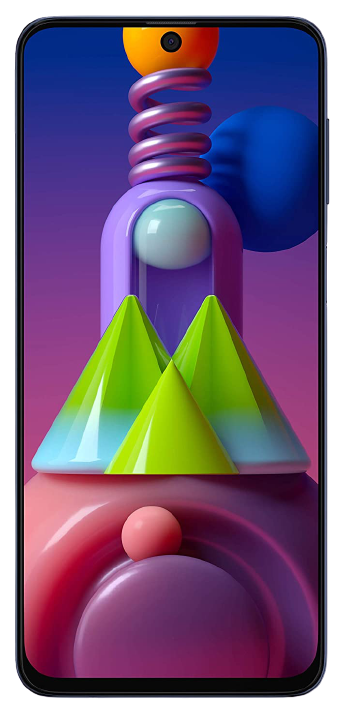
- Amazon.in
- View at Amazon.in

